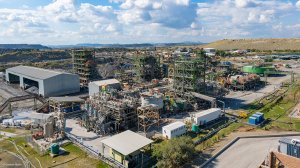JOHANNESBURG (miningweekly.com) – The R1-billion solar project being developed by Chariot Transitional Power and Total Eren in North West province is on track as planned to be completed end 2024.
In doing so, it will contribute to Tharisa Minerals’ planned reduction of 30% of carbon emissions in 2030, Tharisa investor relations and communications head Ilja Graulich stated in response to Mining Weekly on Friday.
Construction of the Buffelspoort Project solar energy facility, which is set to start in the second quarter of 2024, is expected to create jobs for about 200 people, mainly drawn from the local communities.
The project will generate up to 40 MW of photovoltaic (PV) electricity to the London- and Johannesburg-listed Tharisa’s platinum group metals (PGMs) and chrome mine in Rustenburg.
The PV project will supply electricity to the South African PGMs mine on a minimum 15-year power purchase agreement.
“As an Africa-focused developer and an independent power producer, our core mandate is to develop, finance and operate renewable projects in Africa to sell renewable energy to private off-takers,” Chariot CEO Benoit Garrivier stated in a release put out by the Department of Trade, Industry and Competition, which highlighted Chariot’s momentum towards fulfilling its investment pledge, made at the fifth South African Investment Conference hosted by President Cyril Ramaphosa in Johannesburg in April this year.
“South Africa is an important market for Chariot because of its size in Sub-Saharan Africa, the abundance of renewable solar resources, the existence of various strong corporate off-takers and a supportive government.
“Various government initiatives over the last few years have made the South African market ideal.
“We’re delighted to be working on this project, alongside our partner Total Energies, helping to reduce Tharisa’s carbon footprint by developing this independent source of power for their mining operations,” Garrivier added.
Chariot will also supply solar power to the 70% Tharisa-owned Karo PGMs mine in Zimbabwe at the initial installed capacity of 30 MW, as part of a broader project of 300 MW to be developed over the mine’s evolution.
EMAIL THIS ARTICLE SAVE THIS ARTICLE ARTICLE ENQUIRY
To subscribe email subscriptions@creamermedia.co.za or click here
To advertise email advertising@creamermedia.co.za or click here











